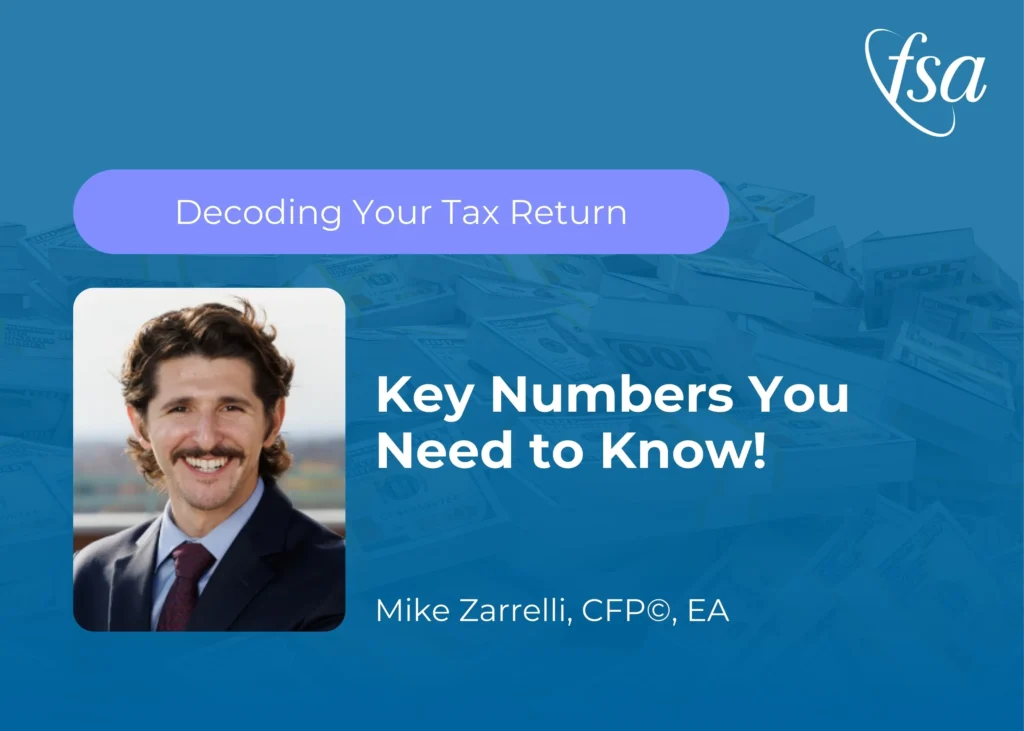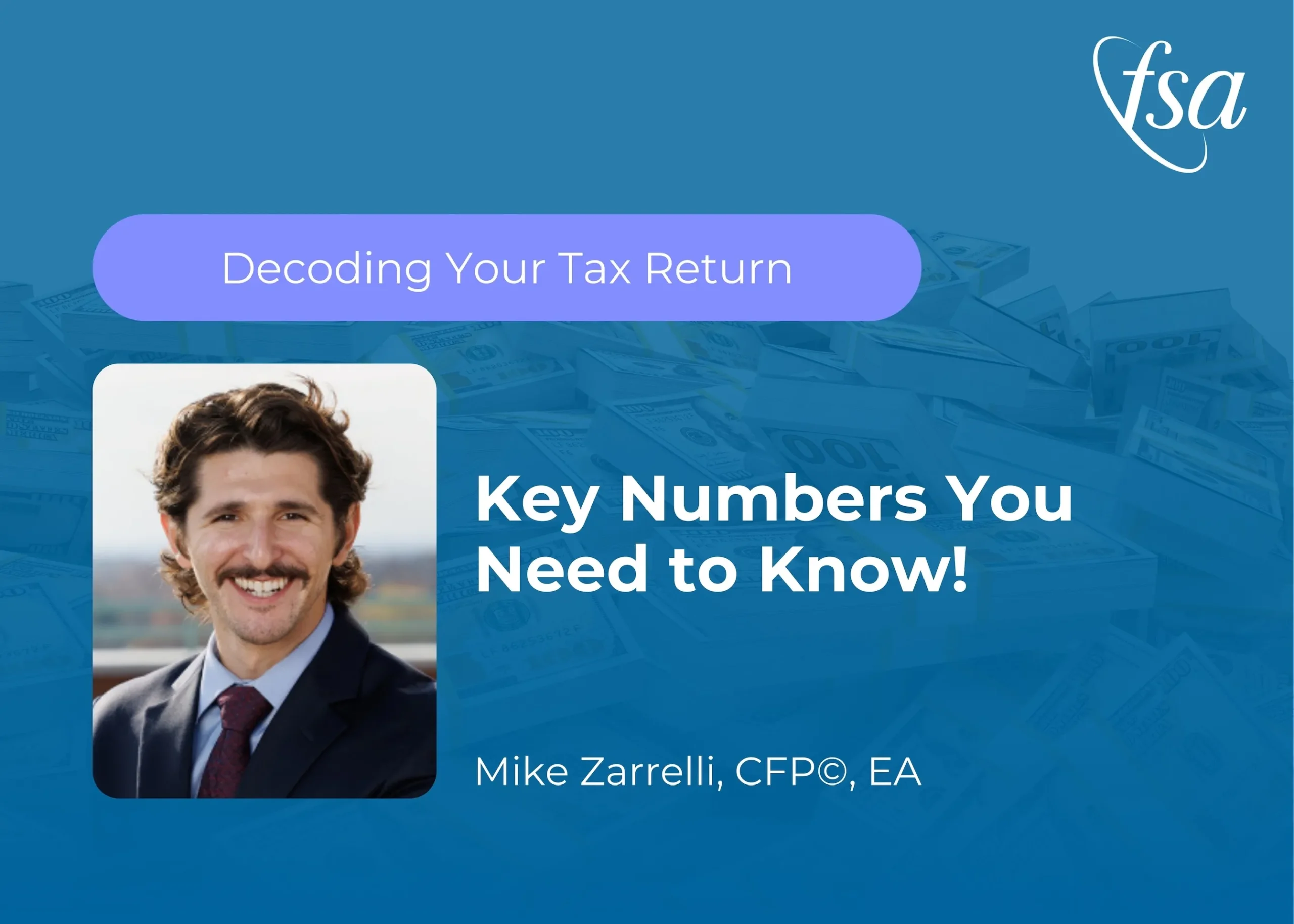Welcome to Money Matters with FSA
We made it through the 2024 tax season—unless, of course, you filed for an extension. I’m Mike Zarelli, CFP®, EA, and in this edition of Money Matters with FSA, we’re breaking down why now is the perfect time to review your tax return and which key data points are most important.
Tax documents aren’t just for recordkeeping—they’re filled with insights that can help optimize your future financial planning. Whether you worked with a CPA or used software like TurboTax, your summary page and Form 1040 tell a compelling story about your income, deductions, and opportunities for strategic tax planning.
What Should You Review on Your Tax Return?
Your tax return gives you a snapshot of where your money went and where you might be able to save more going forward. Here are the most important areas to review:
1. Adjusted Gross Income (AGI)
Your AGI is the total income you earned throughout the year, before deductions. It sets the stage for your tax liability and eligibility for various credits. Example: A client with $225,500 in AGI may not be taxed on the full amount, thanks to deductions and credits.
2. Taxable Income
After subtracting deductions, you get your taxable income. In our example, that number was $194,000. This is the amount the IRS actually taxes, and it determines which tax brackets apply to you.
3. Marginal vs. Effective Tax Rate
- Marginal Rate: The highest rate you pay on your last dollar of income.
- Effective Rate: The average rate you actually paid.
4. Standard vs. Itemized Deduction
In our case study, the marginal rate was 22%, but the effective rate came out to just 14%. You can calculate it by dividing the total tax paid ($32,000) by your AGI ($225,500).
In 2024, the standard deduction for married couples filing jointly was $29,200. If your deductions (like mortgage interest, state taxes, or medical expenses) exceed that, itemizing might make sense. You can check Line 12 on your 1040 or review Schedule A to see if you itemized.
What Strategies Should You Look For on Your Return?
Even if your return is already filed, reviewing it now can help you and your advisor spot opportunities for strategic tax planning:
Qualified Charitable Distributions (QCDs)
If you’re over age 70½, a QCD lets you donate directly from your IRA to a qualified charity—without counting the distribution as taxable income. On your 1040, you’ll see this reflected on Line 4a and 4b. For example, if you withdrew $75,000 but did a $25,000 QCD, only $50,000 would be taxable.
Form 8606 – Nondeductible IRAs and Roth Conversions
This often-overlooked form tracks after-tax IRA contributions and Roth conversions—especially helpful for high earners using the Backdoor Roth strategy.
Why it matters:
- Prevents double taxation on after-tax contributions
- Documents Roth conversions clearly for the IRS
- Ensures future withdrawals from Roth IRAs remain tax-free
If you made nondeductible contributions or completed a Roth conversion, Form 8606 is a must.
Backdoor Roth IRA Strategy
This two-step move involves:
- Making a nondeductible contribution to a Traditional IRA
- Converting that amount to a Roth IRA
If done correctly, it results in no additional tax owed. But both steps must be documented accurately—especially on Form 8606.
Final Takeaways: Why This Matters Now
Reviewing your tax return after filing might seem unnecessary, but it’s actually a powerful way to uncover:
- Missed opportunities (like QCDs or Roth strategies)
- Planning gaps (like insufficient documentation on Form 8606)
- Opportunities for forward-looking tax planning
At FSA Wealth Partners, we work with our clients year-round—not just at tax time—to make sure their tax strategies are optimized and their financial plans stay on track.
Need Help Reviewing Your Return or Planning for Next Year?
Now’s the time to get ahead of next year’s tax planning. If you have questions about your return or wonder if you’re missing out on key strategies, let’s talk.
Stay informed by subscribing to our Money Matters with FSA series for expert financial guidance.
FSA’s current written Disclosure Brochure and Privacy Notice, discussing our advisory services and fees, is available at www.fsawealthpartners.com/disclosures or by calling (301) 949-7300.
See you in the next edition of Money Matters with FSA.




